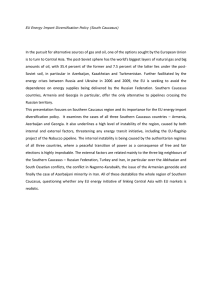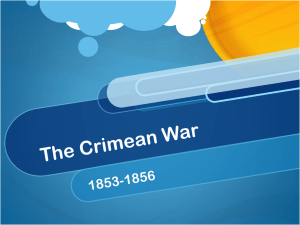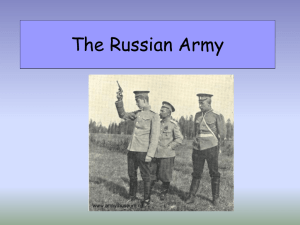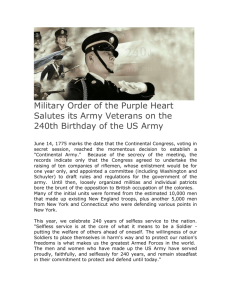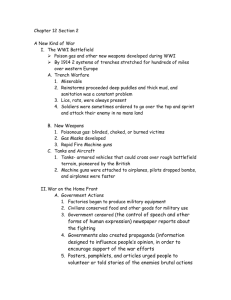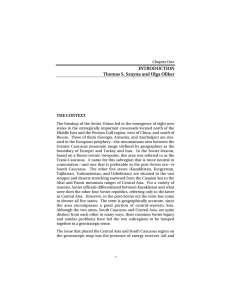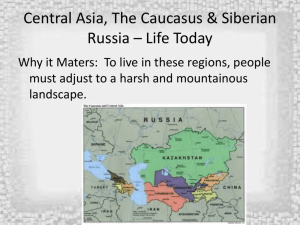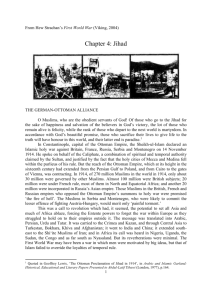As Between Friends - Schoolhistory.co.nz
advertisement
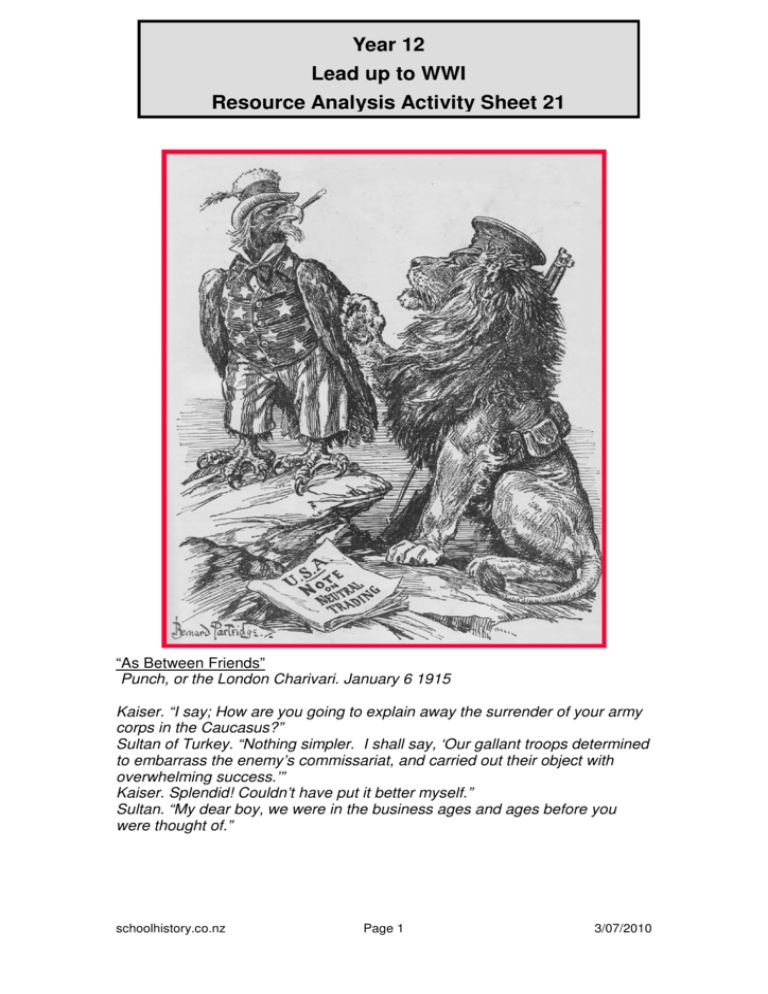
Year 12 Lead up to WWI Resource Analysis Activity Sheet 21 “As Between Friends” Punch, or the London Charivari. January 6 1915 Kaiser. “I say; How are you going to explain away the surrender of your army corps in the Caucasus?” Sultan of Turkey. “Nothing simpler. I shall say, ‘Our gallant troops determined to embarrass the enemy’s commissariat, and carried out their object with overwhelming success.’” Kaiser. Splendid! Couldn’t have put it better myself.” Sultan. “My dear boy, we were in the business ages and ages before you were thought of.” schoolhistory.co.nz Page 1 3/07/2010 Questions 1. What date was this cartoon published? 2. What has just happened at this time? 3. In which country was this cartoon published? 4. Who are the two gentlemen? 5. What are “Euphemists”? 6. Is there an element of propaganda or stereotyping in this cartoon? 7. What was the significance of this event to New Zealand? schoolhistory.co.nz Page 2 3/07/2010 Teacher’s Notes: Euphanism is the substitution of an agreeable or inoffensive expression for one that may offend or suggest something unpleasant. The official Russian declaration of war to Ottoman Empire came on November 2 1914. The commander of 3rd Army, Hasan Izzet was not in favor of an offensive action in the harsh winter conditions. His plan to remain in defense and launch a counter attack at the right time. This was overridden by the War Minister Enver Pasha. On November 7, the Ottoman 3rd Army commenced its offensive with the participation of the XI Corps and all cavalry units. This force was supported by Kurdish Tribal Regiment. The cavalry failed to execute the encircling and the Kurdish Tribal Regiment proved to be unreliable. Russians gained territory after the withdrawal of the 18th and the 30th Divisions. Ottoman forces managed to maintain their positions at Köprüköy. By 12 November, the IX Corps with Ahmet Fevzi Pasha reinforce the XI Corps on the left flank. The 3rd Army began to push the Russians back with the support of the cavalry. The 3rd Infantry Regiment managed to invade Köprüköy after the Azap Offensive between November 17 to 20. By the end of November, the front had stabilized with the Russians clinging to a salient 25 kilometers into Ottoman Empire along the Erzurum-Sarıkamış axis. On January 6, the 3rd Army headquarters found itself under fire. Hafız Hakkı Pasha ordered a total retreat. On January 7, the remaining forces began their march towards Erzurum. The result of Battle of Sarikamish was a stunning defeat. Only 10% of the Army managed to retreat back to its starting position. Enver gave up command. The detachment Armenian volunteer units credited no small measure of the success which attended by the Russian forces; they challenged the Ottoman operations during the critical times: "the delay enabled the Russian Caucasus Army to concentrate sufficient force around Sarikamish".[14] Enver blamed this defeat on Armenians living in the region actively siding with the Russia after returned to Constantinople.[15] On January 18, 1915, the Lt. Col. Stange Unit was removed from adjacent regions of Ardahan. It stayed behind the line in the region. the unit went back to its initial line on March 1, 1915. In February, General Yudenich was praised for the victory and promoted to command over all Russian troops in the Caucasus. The Allies (British and France) asked Russia to relieve the pressure on Western front. Russia asked the Allies to relieve pressure in the Caucasus by a naval attack. The operations in the Black Sea gave the chance to replenish Russian forces. Also operations at the Battle of Gallipoli which was aimed at capturing the Ottoman capital helped the Russian forces in this front.[2] On 12 February, commander of the 3rd Army Hafız Hakkı died of typhus and was replaced by Brigadier General Mahmut Kamil Paşa. Kamil’s took the task pf putting the army in order. Reference Caucasus Campaign, retrieved 3 July 2010 from http://en.wikipedia.org/wiki/Caucasus_Campaign#1915 schoolhistory.co.nz Page 3 3/07/2010 Battles of 1915, 1916 schoolhistory.co.nz Page 4 3/07/2010
